Filipino Adobo-flavored Eggs
As an Amazon Associate and member of other affiliate programs, I earn from qualifying purchases.
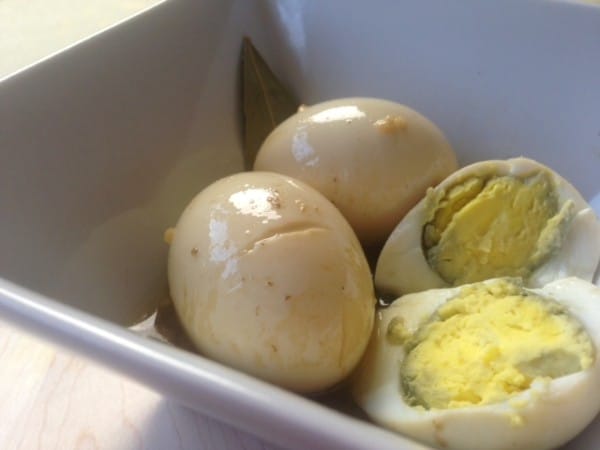
In my mother’s kitchen there was always a big pot of adobo cooking on the stove, I can still picture the bubbles from the garlic- vinegar stew briskly boiling and spewing intense aromas all over the house.
One thing about cooking adobo was that I often had leftover broth. By the time the stew was cooked the gravy had thickened to a deep brown, the consistency nearly syrupy in texture.
And so with leftover broth and the mainstay of hard boiled ones, I make Adobo Eggs. I got this easy delightful idea from Chef Romy Dorotan at Purple Yam in Brooklyn. He served adobo eggs for brunch at his restaurant. Since then, I put to good use the adobo broth that is plentiful in the stockpot.
After cooking hard boiled eggs, I peel and toss them into the deep pot. A swirl or two and a few minutes of simmering is all that’s needed. Some nights I even served it with steamed buttered green beans and a big bowl of fragrant jasmine rice. It’s sheer comfort food that’s been our little family secret for a while now. It is so scrumptious I don’t mind sharing it with you.
Filipino Adobo-flavored Eggs
Ingredients
- 8 whole large eggs
- water enough to cover eggs in stock pot
- 1-2 cups adobo broth from leftover adobo dishes
- 1/2 cup cider vinegar for cooking adobo broth
- 1/4 cup toyo (soy sauce) for cooking adobo broth
- 1 cup water for cooking adobo broth
- 6 cloves garlic peeled, mashed, for adobo broth
- 1 teaspoon black peppercorns
- 2 pieces bay leaf
- 1 teaspoon salt
- 1 teaspoon ground black pepper
- for serving: steamed rice
Instructions
- How to make hardboiled eggs: In a medium sized stock pot add the water and cover. When the water boils, add the eggs and cook for 10 minutes. When cooked, remove from hot water right away. Soak the cooked eggs in cold water right away. Leave eggs soaking for 5 minutes, then remove. Store eggs in refrigerator. This method makes it easier to peel the eggs. Peel eggs and set aside.
- In the large stockpot where the chicken-pork adobo cooked, remove the meats but leave the leftover broth. Over medium heat add the hard boiled eggs. Cover and simmer in the adobo broth for about 10 minutes. When serving, pour some of the adobo gravy over the cooked eggs. Serve with boiled rice.
- My adobo recipe is in a previous blog post. For the complete procedure, click here.
- If you don’t have leftovers, here’s how to make adobo broth: In a medium stock pot combine the vinegar, water, soy sauce, garlic, pepper corns, bay leaf, salt and black pepper powder. Bring liquid to a boil then lower heat to a simmer. Add the peeled hard boiled eggs and cook for 10 to 15 minutes.
- Hello, Friends! All the images and content here are COPYRIGHT PROTECTED. This means BY LAW you are NOT allowed to use my photos or content on your website without my permission. If you want to republish this recipe, please re-write it in your own words and simply link back to this blog to give proper attribution. It’s the legal thing to do. Thank you.
Nutrition
Nutrition Notes: The nutrition information is an estimate and will vary based on cooking methods and brands of ingredients used.

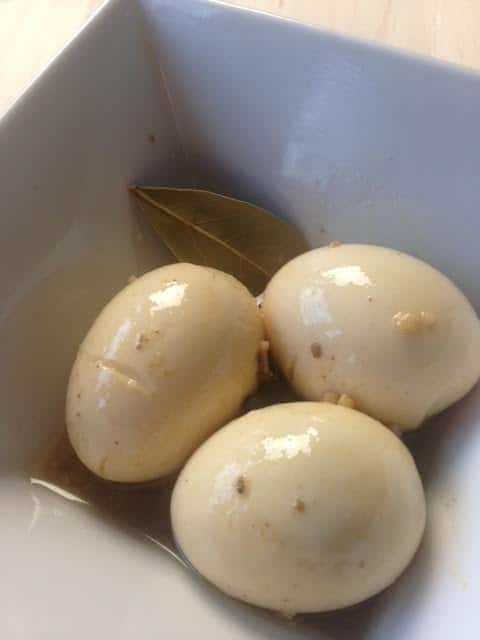
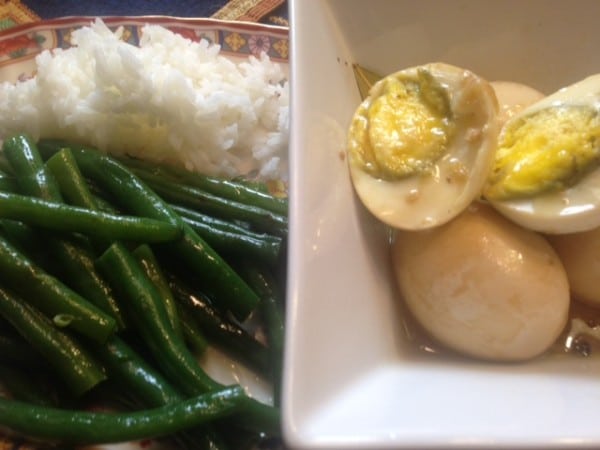
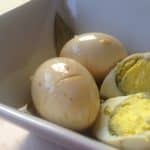

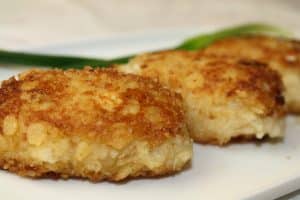
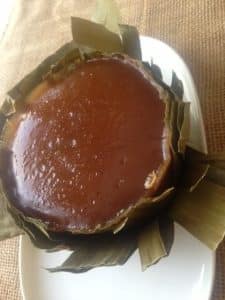



I had no idea there is a dish called Adobo Eggs! I have to make these! Look so delicious. Love eggs, and marinated eggs are even better. 🙂
Thanks, Nami. I got the idea from Chef Romy Dorotan of Purple Yam NYC. When there’s leftover adobo broth, I make these adobo eggs and it’s always a great side or meal in itself.
When my late first wife, Nancy, prepared adobo, she added hard-boiled eggs in the final 5 minutes of cooking. She said that she learned this from her pure-Chinese father. The end result was no longer adobo, but a Chinese dish called Toyoba
Thanks, Ernesto. What an interesting story. I will definitely look into this Chinese dish ‘Toyoba’. Glad you visited the blog 🙂
Thank goodness. I have the leftover broth from my first attempt at chicken adobo. I didn’t want to throw it away, too delicious to waste and this is a perfect use of it. Is there any way to use it for any other recipes? As a base for a soup? I already used some to make adobo fried rice, but I still have a lot left. I’m going to make the some eggs now!
Thanks, Lorraine. Glad you found this recipe useful. You can also use leftover adobo sauce in stir-fry vegetables, for e.g. for Adobong Kangkong or Adobong Sitaw. Enjoy 🙂